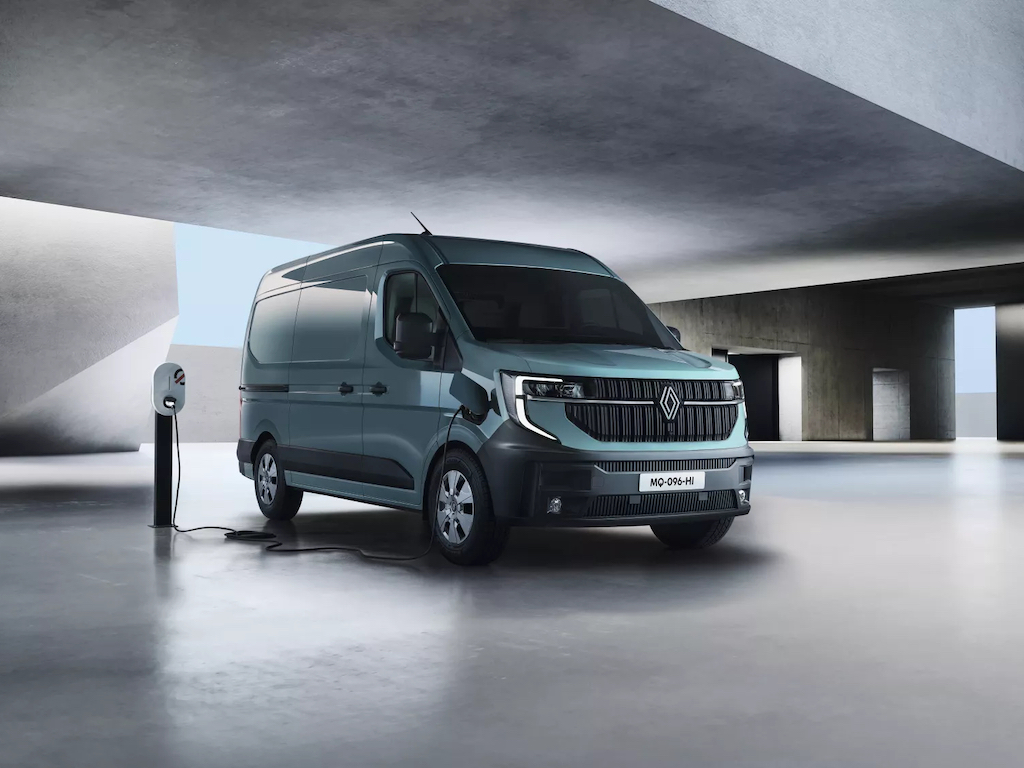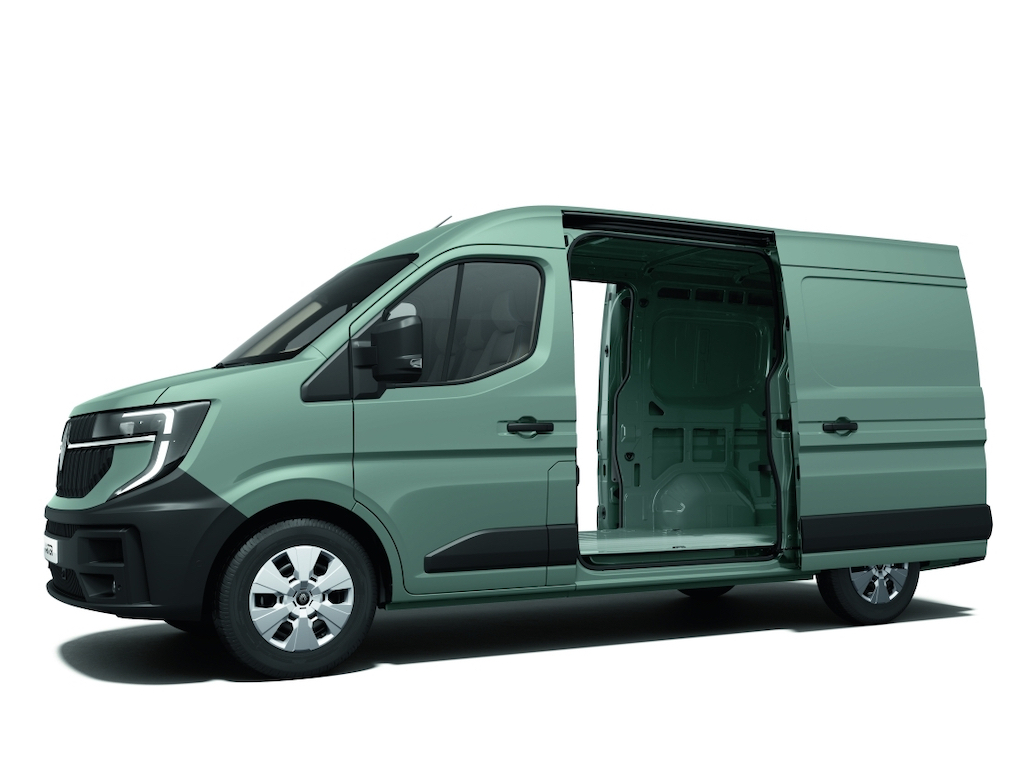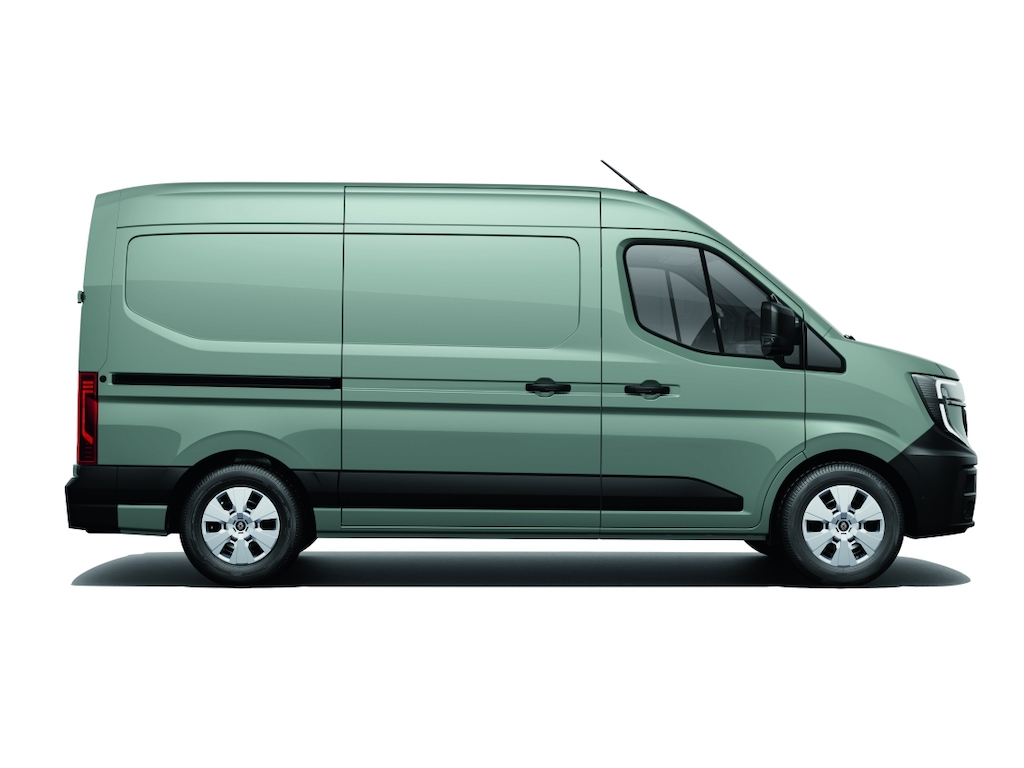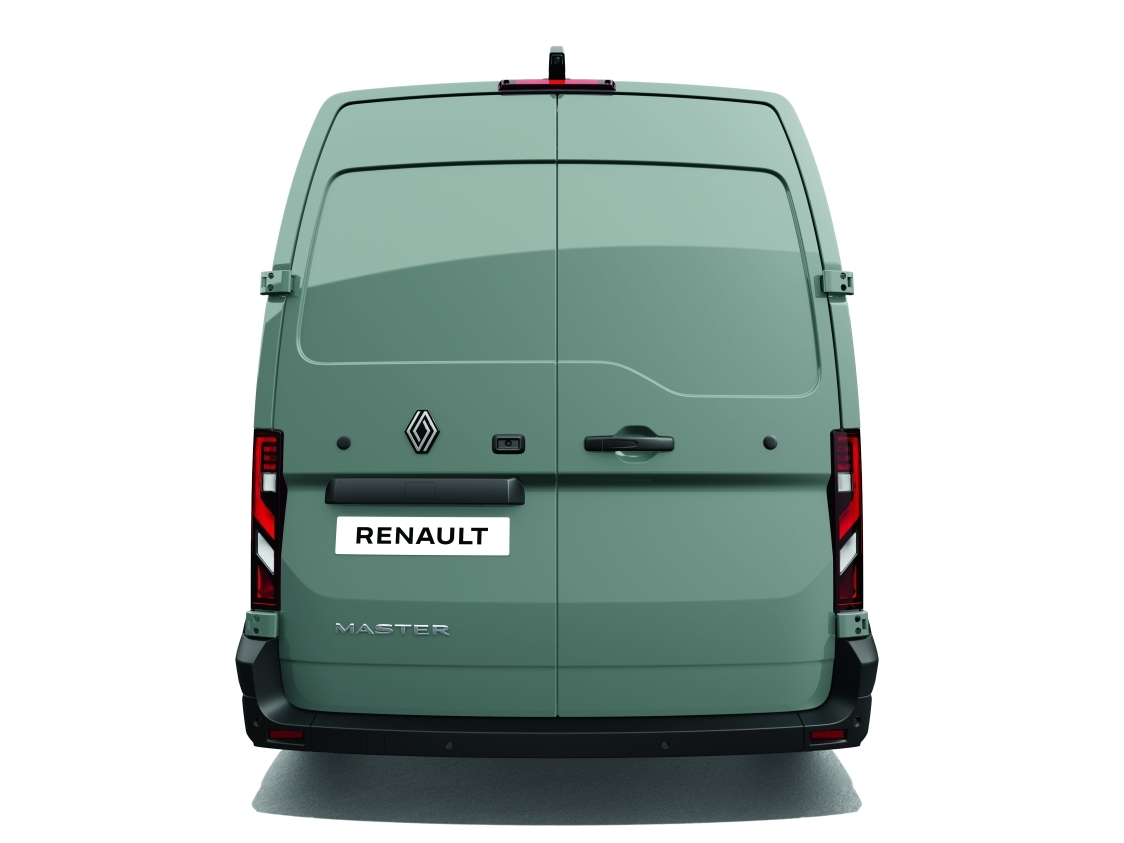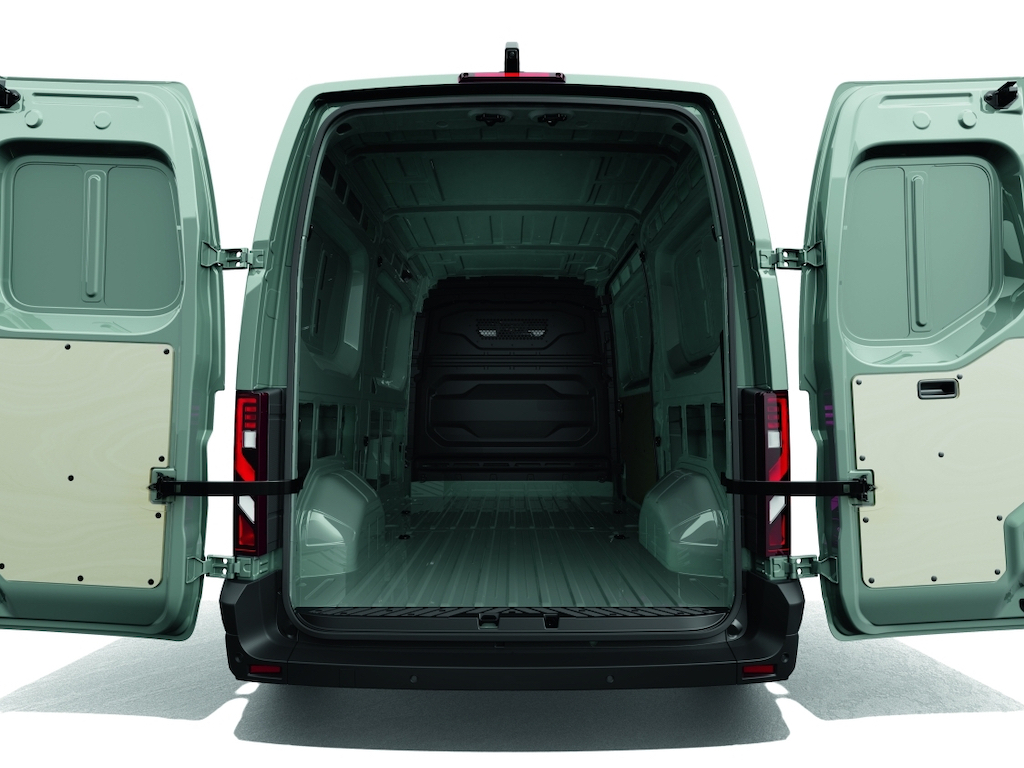All-new Renault Master van line-up uncovered in ICE, EV and hydrogen guise
Renault has uncovered its new Master van line-up – “designed to go further, carry more and cost less”.
Available from spring 2024, the Ford Transit contender has been heavily overhauled for its fourth generation, gaining a bolder new look, extra onboard space and comfort and a raft of new connected features to enhance useability. It also gets a wide range of powertrains, including fully electric and diesel variants from launch and a future hydrogen version.
Key changes for the new model include a more distinctive front-end bearing Renault’s new logo and larger full-LED headlamps in the Master’s signature C-shaped array around the grille, with the same pattern echoed at the rear.
Design is centred around a new, more aerodynamic approach, prompting the ‘Aerovan’ tag. The bonnet is shorter, the windscreen is further forward and tilted, the wing mirrors, air intake ducts in the bumper and roofline slope are streamlined, and the rear is narrower. The sharper aerodynamics have also improved acoustic comfort in the interior.
As a result, its Scx drag coefficiency figure is over 20% lower than the previous model and claimed to be substantially lower than all current rivals.
Such aerodynamic changes have also significantly improved real-world efficiency and the new Master’s CO2 emissions are 39g/km lower, and now below 200g/km for the diesel versions. The line-up will include four Blue dCi powertrains, delivering 105, 130, 150 or 170hp and either paired up to a six-speed manual gearbox or a new nine-speed automatic gearbox.
The revised aerodynamics also contribute to considerably lower energy consumption in the electric versions with a 20% improvement on the current Master.
The new electric Master is powered by a 143hp motor, delivering 300Nm of torque. It’s fed by an 87kWh battery that provides a WLTP range of more than 255 miles – significantly up from the current model.
The battery can be topped up from 10% to 100% using a 22kW AC home charger in just under four hours while a 130kW DC fast charge adds 229km (142 miles) of range in 30 minutes.
Payload for the electric version is now up to 1,625kg, while towing capability is 2.5 tonnes. The Renault Master electric will also offer Vehicle-to-Load (V2L) and Vehicle-to-Grid (V2G) capabilities. V2L will enable users to power other devices from an outlet in the interior or load area, as well as adaptors to plug power tools, computers and other devices into charger outlets. Users can also power custom-built body parts, such as refrigerated compartments, automatic tailgates, extra heating or air-conditioning systems, etc, directly from the battery.
The Master will also be able to feed energy from its battery to the grid (V2G) using a bi-directional charger, helping fleets to cut charging costs while also balancing the grid.
The Master is also designed to accommodate a hydrogen engine and fuel cell in future, advancing on the existing fuel cell-powered Master Van H2-Tech offered by the Hyvia JV between Renault Group and Plug Power.
The interior has also been revamped, gaining an S-shaped dashboard with more premium materials and a 10-inch OpenR Link multimedia system as standard. This features wireless Android Auto and Apple CarPlay compatibility, built-in Google features, and remote vehicle connection via the My Renault app, making drivers more connected and more efficient. The scalable system will grow to offer new functionalities over time, with free over-the-air updates for five years.
Using the OpenR Link multimedia system with Google built-in capabilities also opens the door to creating custom apps for converted vehicles. Three apps are available at the launch: one for fire brigades, one for mobile workshop conversions and one for refrigerated vehicle conversions.
The electric Master also comes with exclusive functions to make the transition to electric mobility simpler while Mobilize Power Solutions, part of Renault Group, can provide a range of made-to-measure charging solutions for company premises, on the road and at employees’ homes.
New comfort features include a steering wheel already seen in the Renault passenger vehicle range and adjustable for height and reach. Gearbox controls for automatic versions are now on the steering wheel, freeing up space in the centre console. In total, the Master has some 135 litres of cabin storage space – up 25% – and spread across the dashboard, side cupholders, glove-box drawers, cab-ceiling slot and two storage tiers in the doors.
The cabin also doubles as a workstation, using the folded-down middle seat as a desk for a laptop, which can be stored in the base. There are also USB-C ports to power devices. Seat choices include suspension and swivelling variants, individual seats and three types of benches (two fabric and one TEP).
Driver assistance systems have also been revised and the new Master offers 20 different systems that include lateral stability, automatic emergency braking and trailer stability assist functions. It also comes with Intelligent Speed Assist, to help the driver stay within the speed limit, while a new power-assisted dynamic braking control system boosts effectiveness no matter how loaded the van is and also halves the time for the automatic emergency braking system to reaction. The new braking system also enhances regenerative braking, extending range on the electric version.
Across the line-up, the Master offers a choice of 20 different configurations, a payload of up to four tonnes, a 11-22m3 load areas plus loading width and length said to be best-in-class.
All versions are built on the same assembly line – located in Batilly in Eastern France – which allows a great deal of flexibility to handle customisation requests.
Orders for the new Master officially open in Q2 2024 and deliveries start later next year. Prices and full specification details are yet be announced.

